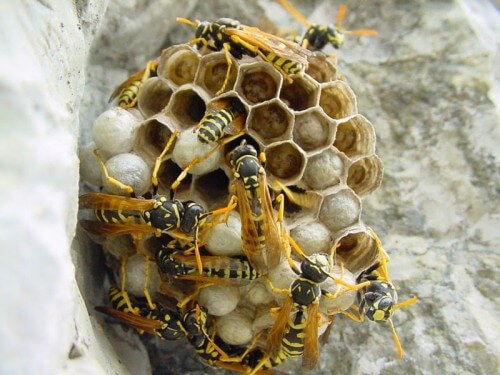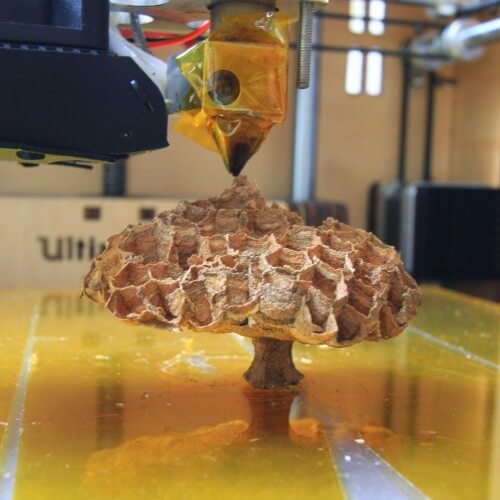The wasp gnaws soft wood and man-made items made of soft wood, chews the pulp, grinds it and mixes it with dung. From the mixture of the building material, the wasps build beautifully designed nests, rigid, protected, ventilated, waterproof, rainproof and durable for many years

By: Shimon Bogan
XNUMXD printing has already been identified as a future technology, which may benefit from the biomimicry approach and cause a revolution in the way we design our future inspired by nature. Following the vision we outlined in the previous news, this time we will detail initial steps to turn the vision into reality, and expand on how wasps build their nests in the context of XNUMXD printing.
The wasp gnaws soft wood and man-made items made of soft wood, chews the pulp, grinds it and mixes it with dung. From the mixture of the building material, the wasps build beautifully designed nests, rigid, protected, ventilated, waterproof, rainproof and durable for many years.
Company 4AXYZ From Seattle USA burst into consciousness with a project that came to convince us to consume furniture that is produced with D3 technology and open source, designed from any type of wood and in amazing combinations, in any style and to satisfy any imagination, even the wildest.
The printer, like the wasp, "spits" the building material and produces the building "from the inside out", at every angle, every twist and around every space with maximum precision. You can get an impression of the variety of designs and the collection of possibilities of Makers from all over the world when you search for 3D printing wood and ask for pictures. Jérémie François from France, for example, provides us with an example that connects us to the wasp, including the image of a stinger

The basis for the above biomimetic manufacturing activity comes in the form of coils of thick threads from ground wood, mixed and bonded in PLA, poly-lactic acid, which is a bio-plastic. The raw material is all of natural origin, non-polluting, biodegradable (why throw away?), recoverable and recyclable. The polymer itself is made from vegetable matter, and in the process of working it emits a smell of pancakes...
The mixture and the final product look like wood, behave like wood, can be processed like wood and even smell like wood, depending on the type of wood they are made of. For more information about the biomimetic raw material, go to the link next.
In the artistic aspect of the furniture design, there is an effect that only the wood growing in nature, the wasps building the nests and the XNUMXD printing know how to create and wood craftsmen are unable to imitate - a combination of shades and shades that arise from each other and gradually melt into each other (merge).
Posted by www.biomimicry.org.il

2 תגובות
When there are interesting things, you can also write about a product of a single company, there is no advertisement here, otherwise I would indicate that it is marketing content.
The article is interesting but looks like a disguised advertisement...